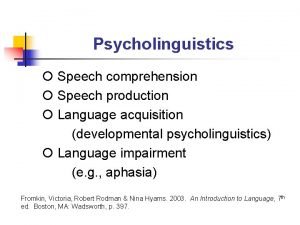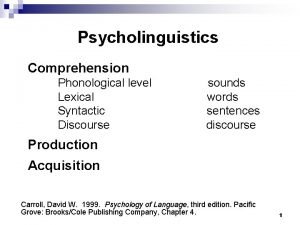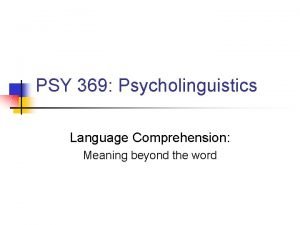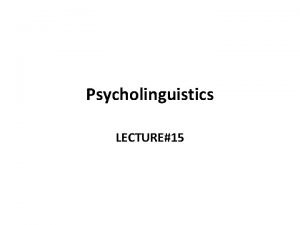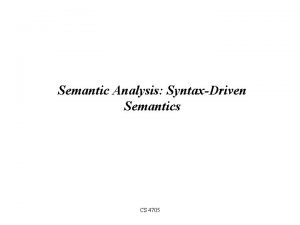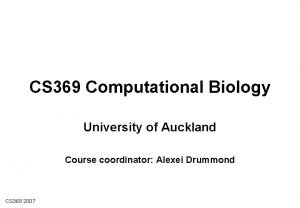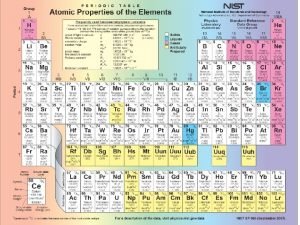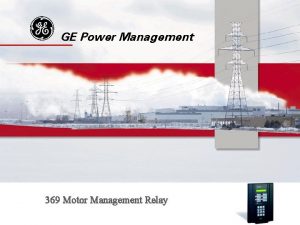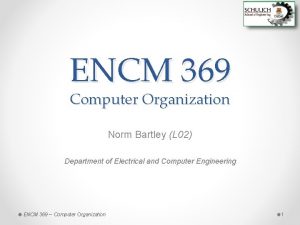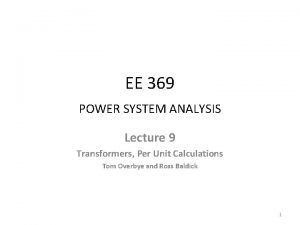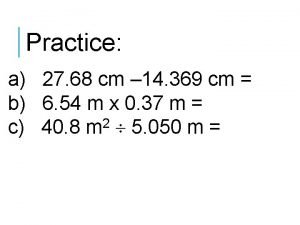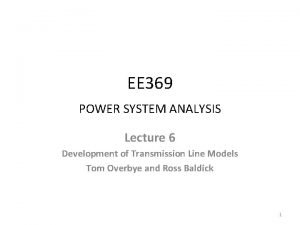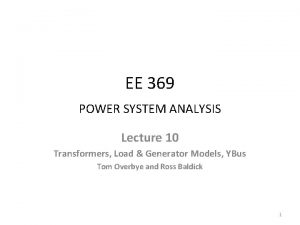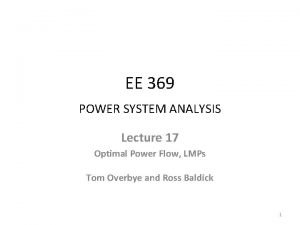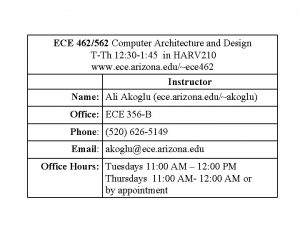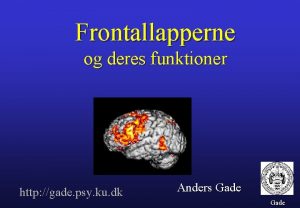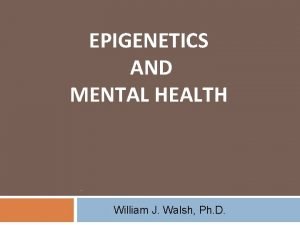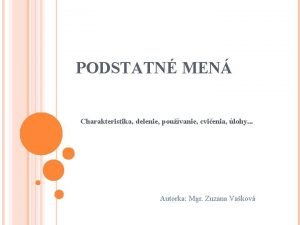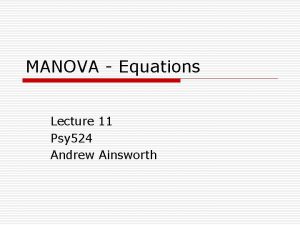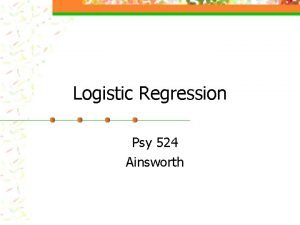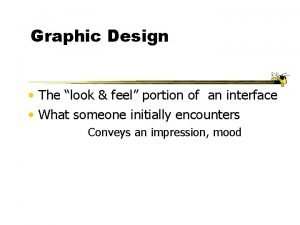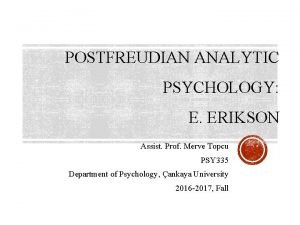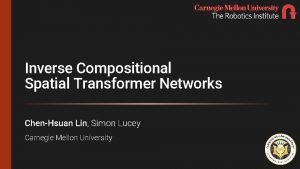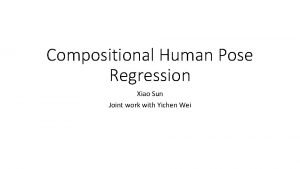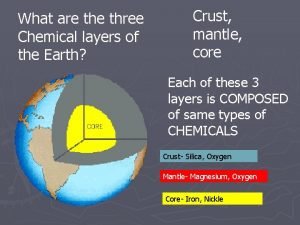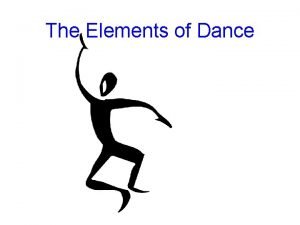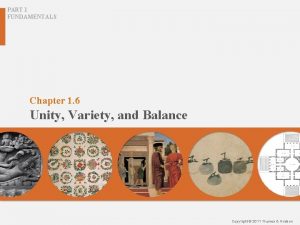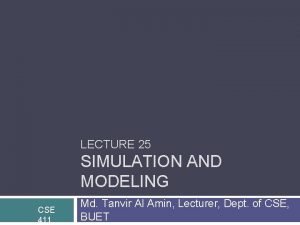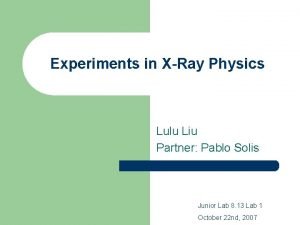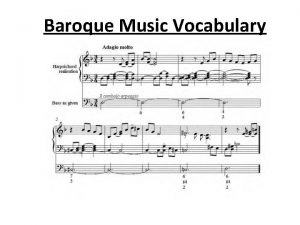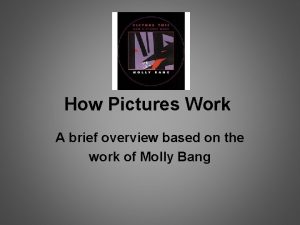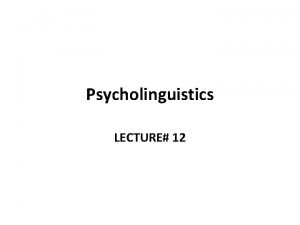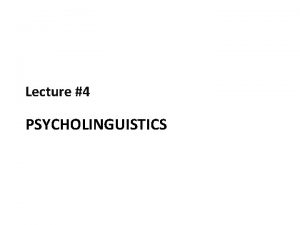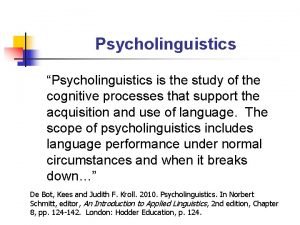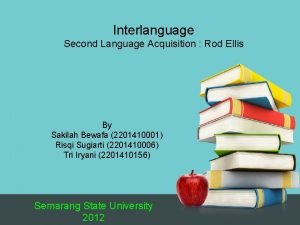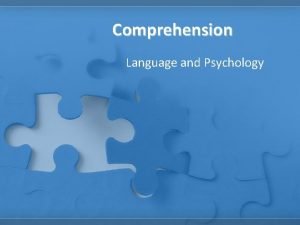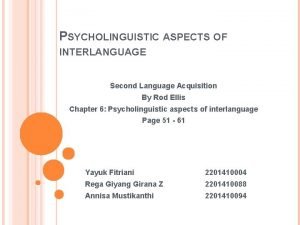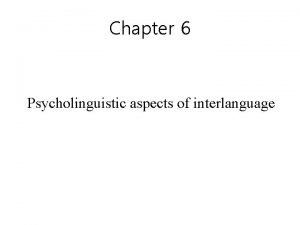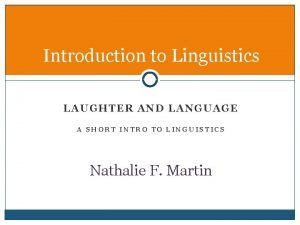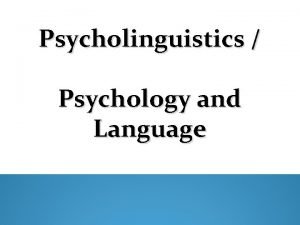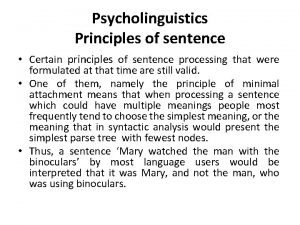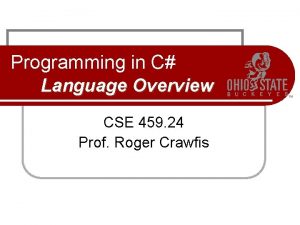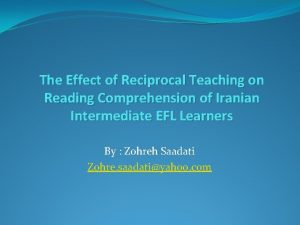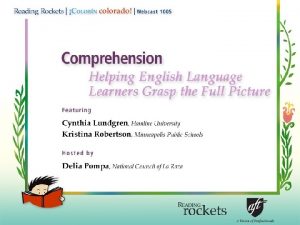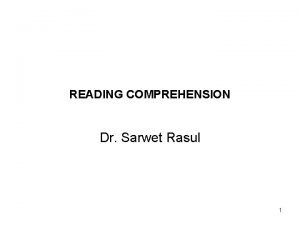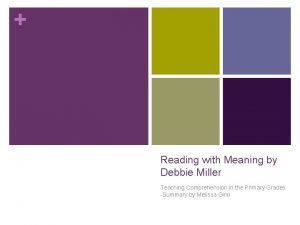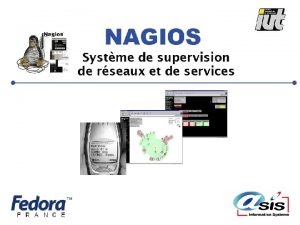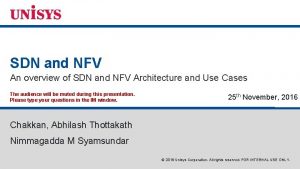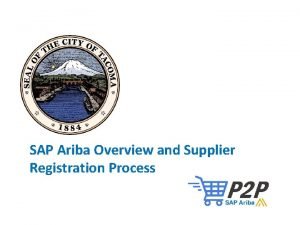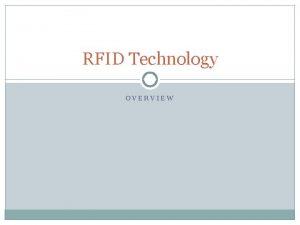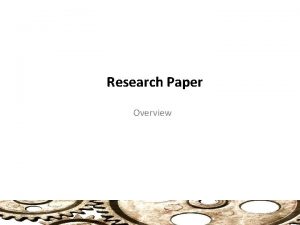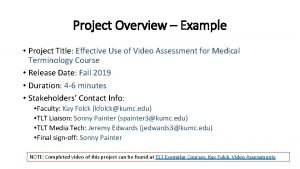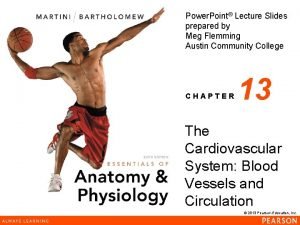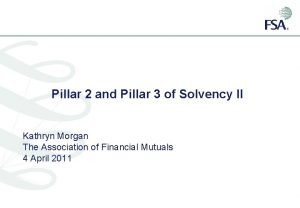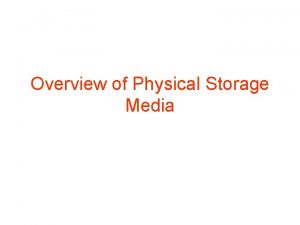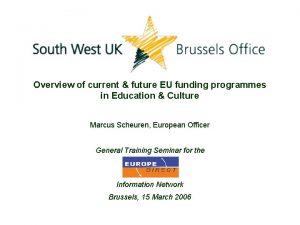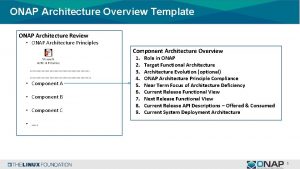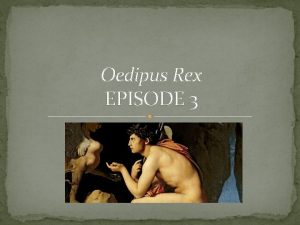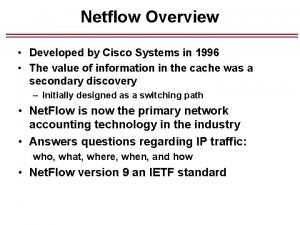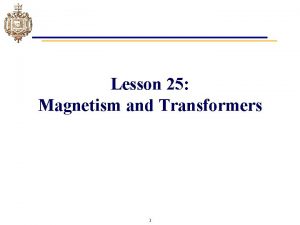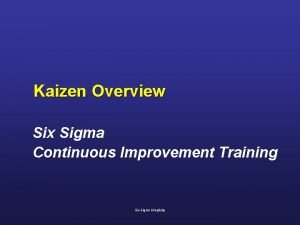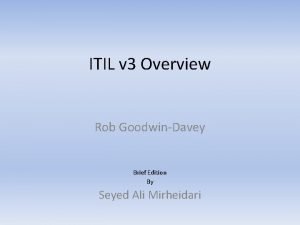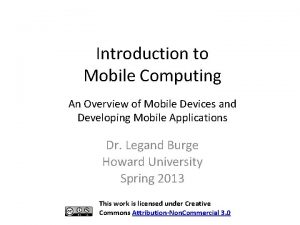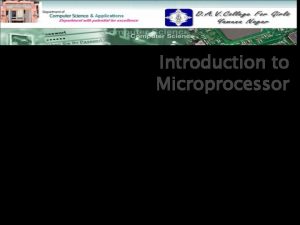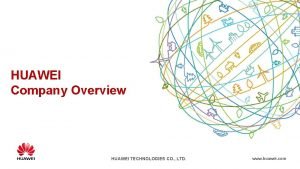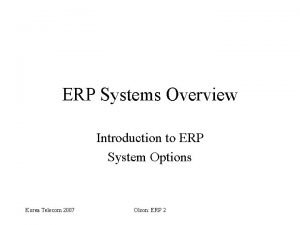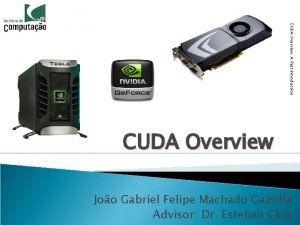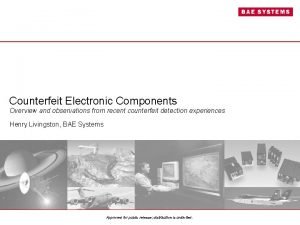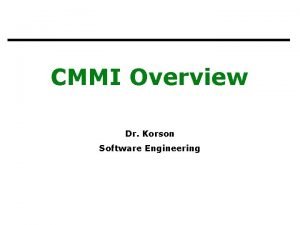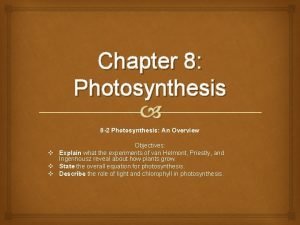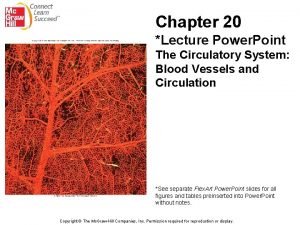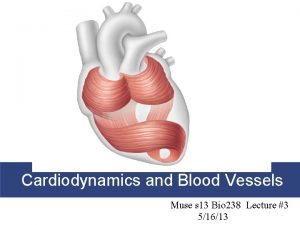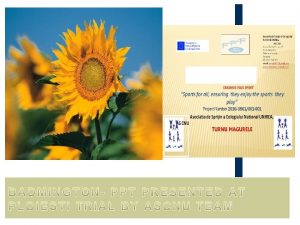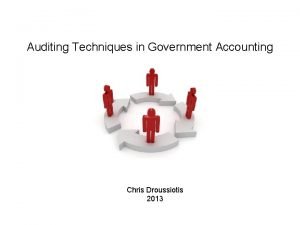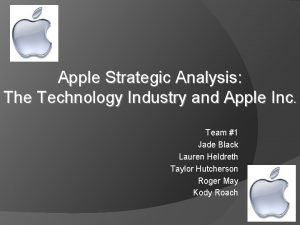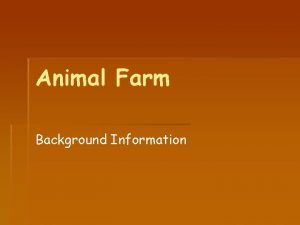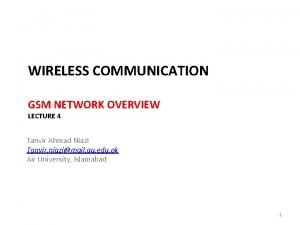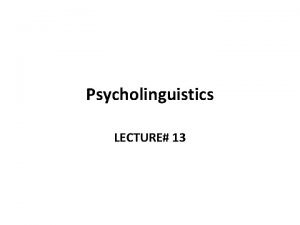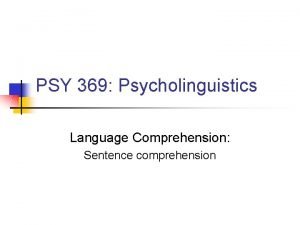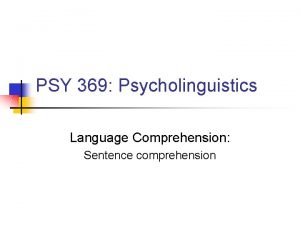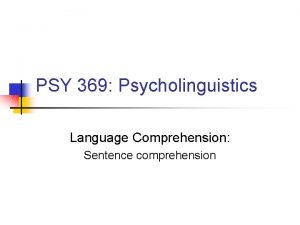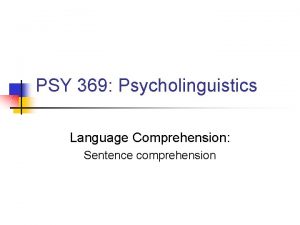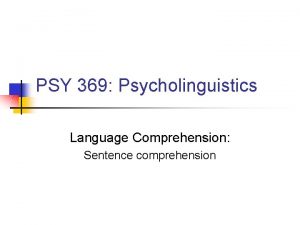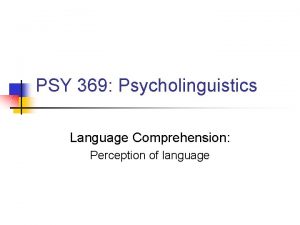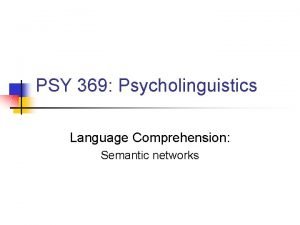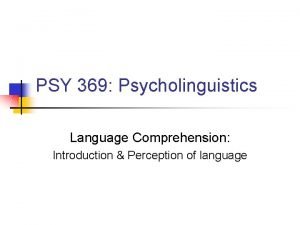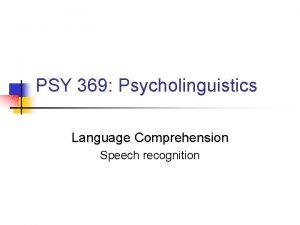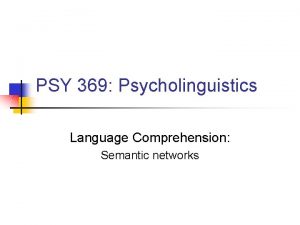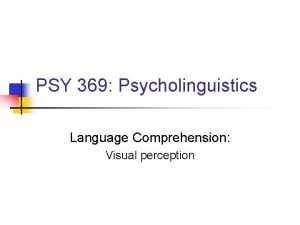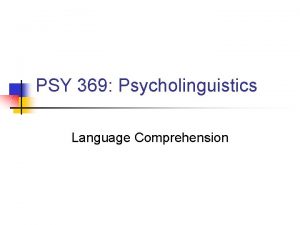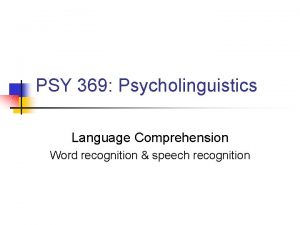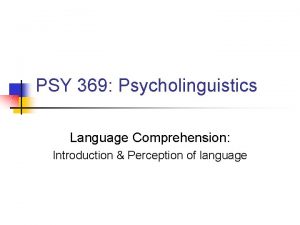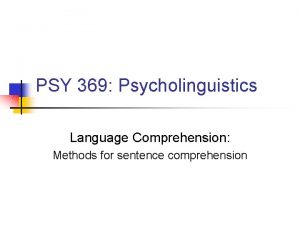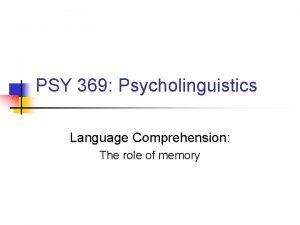PSY 369 Psycholinguistics Language Comprehension Compositional meaning Overview























































































































































- Slides: 151

PSY 369: Psycholinguistics Language Comprehension: Compositional meaning

Overview of comprehension Semantic & pragmatic Syntactic analysis Word recognition We’ve talked about the syntax here Language How does the meaning combine? perception Input He sent a letter about it to Galileo, the great Italian scientist.

Overview of comprehension Semantic & pragmatic Syntactic analysis Word recognition How does the meaning combine? Language How do we representence meaning? perception Input He sent a letter about it to Galileo, the great Italian scientist.

Meaning beyond the word n Move to compositional semantics n Not all meaning resides at the level of the individual words. n n n Conceptual combinations Meaning of Sentences Meaning across multiple sentences (texts & discourse)

Conceptual combination n How do we combine words and concepts? n We can use known concepts to create new ones n Noun-Noun combinations n n Modifier noun Head noun n “Squirrel box” n “Skunk squirrel” n “Helicopter flower”

Conceptual combination n How do we combine words and concepts? n Relational combination n Property mapping combination n Relation given between head and modifier “squirrel box” a box that contains a squirrel Property of modifier attributed to head “skunk squirrel” a squirrel with a white stripe on its back Hybrid combinations n n A cross between the head and modifier “helicopter flower” a bird that has parts of helicopters and parts of flowers

Conceptual combination n How do we combine words and concepts? n How do theories do? n n Instance theory has problems Separate Prototypes? (big wooden spoon) n n n But sometimes the combination has a prototypical feature that is not typical of either noun individually (pet birds live in cages, but neither pets nor birds do) Modification? (brown apple, peeled apple) Extending relational structure between characteristics? n n When nouns are “alignable” (zebra horse) But non-alignable nouns are combined using a different mechanism (zebra house)

Meaning beyond the word n Move to compositional semantics n Not all meaning resides at the level of the individual words. n n n Conceptual combinations Meaning of Sentences Meaning across multiple sentences (texts & discourse)

Memory for sentences Think back to the beginning of class. Which of the following sentences did you read? n Galileo, the great Italian scientist, sent him a letter about it. n He sent Galileo, the great Italian scientist, a letter about it. n He sent a letter about it to Galileo, the great Italian scientist. n A letter about it was sent to Galileo, the great Italian scientist.

Memory for sentences Sachs (1967, 1974) n Heard (read): n n Tested: n n n “He sent a letter about it to Galileo, the great Italian scientist. ” Same: He sent a letter about it to Galileo, the great Italian scientist. Act/Pass: A letter about it was sent to Galileo, the great Italian scientist. Formal: He sent Galileo, the great Italian scientist, a letter about it. Meaning: Galileo, the great Italian scientist, sent him a letter about it. Measured accuracy of detecting changes

Memory for sentences Sachs (1967, 1974) Conclusions: Sentence meaning gets preserved, surface structure (and syntax) forgotten

Propositions n How do we representence meaning? n Propositions n n n Two or more concepts (arguments) with a relationship (relations) between them n Arguments – particular times, places, people, objects, etc. (nouns) n Relations - May be used for any kind (e. g. , actions, attributes, positions, class memberships) Smallest unit of knowledge that can be judged as true or false Complex sentences consist of combinations of smaller propositional units

Propositions n How do we representence meaning? n Propositions n Two or more concepts with a relationship between them A mouse bit a cat bit (mouse, cat) mouse agent n patient relation bit Can represent this within a network framework cat

Deriving Propositions More complex example: Children who are slow eat bread that is cold n tio rel a on t Bread ati Children Eat rel e tim ct bje Slow su n Past ec n Slow children Children eat bread Bread is cold su bj n tion n rela n Cold

Evidence for propositions n n Bransford and Franks (1971, 1972) Ratcliff and Mc. Koon (1978)

Evidence for propositions n n Bransford and Franks (1971, 1972) Study-Recognition Test Task n Read sets of sentences, answered a question about each, later presented sentences and asked whether they were new (not previously presented) or old (previously presented) The girl broke the window on the porch. Broke what? The hill was steep. What was? The cat, running from the barking dog, jumped on the table. From what? The tree was tall. Was what? The old car climbed the hill. Did what? The cat running from the dog jumped on the table. Where? The girl who lives next door broke the window on the porch. Lives where? …

Evidence for propositions n n Bransford and Franks (1971, 1972) Study-Recognition Test Task All of the sentence came from 4 complex sentences. The full complex sentences were not presented at study. e. g. , The girl who lives next door broke the large window on the porch … The girl lives next door. The girl broke the window. The window was on the porch. The window was large.

Evidence for propositions n n Bransford and Franks (1971, 1972) Study-Recognition Test Task Test: Old - same sentences that were presented at study New - based on the propositions in the complex sentence, but not presented at study (including the full complex sentences) Noncase - based on new propositions not based on the complex sentences (mixing of propositions across the different situations)

Evidence for propositions n Recognition confidence n Yes 5 Yes 4 Yes 3 Yes 2 Yes 1 0 No 1 No 2 No 3 No 4 No 5 Bransford and Franks (1971, 1972) Study-Recognition Test Task Results: • new old False recognition of sentences that they were not previously presented with • Accurate rejections of noncases (different propositions) • Unable to distinguish between the old and new cases that came from the same complex sentences ★ fours threes twos ones # of propositions noncases

Evidence for propositions n n Bransford and Franks (1971, 1972) Study-Recognition Test Task Recognition confidence Conclusions: Yes 5 Yes 4 Yes 3 Yes 2 Yes 1 0 No 1 No 2 No 3 No 4 No 5 • new old • ★ fours threes twos ones # of propositions noncases Participants remembered the basic meaning (propositions) Participants spontaneously combined the propositions into larger units

Evidence for propositions n Ratcliff and Mc. Koon (1978) Tested 3 hypotheses: 1. 2. 3. Sentences stored as single unit Sentences stored as connected propositions Sentences stored verbatim

Evidence for propositions n n Ratcliff and Mc. Koon (1978) Study-Recognition Test Task n n Read sets of 4 unrelated sentences, then presented words (one at a time) and asked whether the words were in the preceding sentences Dependent Measure: Priming - manipulated the order of the words at test The mausoleum that enshrined the tsar overlooked the square. The clutch failed to engage. The beggar forgave injustice but resented hunger. Satire hurt the incumbent. hunger Y Saturn N square Y mausoleum Y beetle N

Evidence for propositions n Ratcliff and Mc. Koon (1978) n Involves two propositions: n n P 1 [OVERLOOK, MAUSOLEUM, SQUARE] P 2 [ENSHRINE, MAUSOLEUM, TSAR]. The mausoleum that enshrined the tsar overlooked the square. The clutch failed to engage. The beggar forgave injustice but resented hunger. Satire hurt the incumbent.

Evidence for propositions n n Ratcliff and Mc. Koon (1978) Predictions (if Hypothesis 2: propositions are the memory representation): n n If prime word from the same sentence, then should respond faster If prime word from the same proposition, then should respond faster than if from a different proposition (within the same sentence) The mausoleum that enshrined the tsar overlooked the square. The clutch failed to engage. square clutch square tsar square mausoleum Across sentences Between two propositions in the same sentence Within a single proposition

Evidence for propositions n n Ratcliff and Mc. Koon (1978) Predictions (if Hypothesis 2: propositions are the memory representation): n n If prime word from the same sentence, then should respond faster If prime word from the same proposition, then should respond faster than if from a different proposition (within the same sentence) **91 msec n Results 671 square clutch Across sentences **111 msec 580 square tsar 560 square mausoleum Between two propositions in the same sentence Within a single proposition

Evidence for propositions n n Ratcliff and Mc. Koon (1978) Predictions (if Hypothesis 2: propositions are the memory representation): n n If prime word from the same sentence, then should respond faster If prime word from the same proposition, then should respond faster than if from a different proposition (within the same sentence) **20 msec n Results 671 square clutch Across sentences 580 square tsar 560 square mausoleum Between two propositions in the same sentence Within a single proposition

Evidence for propositions n n Predictions (if Hypothesis 2: propositions are the memory representation): n n n Ratcliff and Mc. Koon (1978) If prime word from the same sentence, then should respond faster If prime word from the same proposition, then should respond faster than if from a different proposition (within the same sentence) Conclusions n Support the hypothesis that propositions are used to organize our memories of sentences

Inference in comprehension n Not all propositions come from the bottom-up n Elaboration - integration of new information with information from long term memory n n Memory for the new information improves as it is integrated Inferences - a proposition (or other representation) drawn by the comprehender n From LTM, not directly from the input

Inference in comprehension n Bransford, and colleagues (1972, 73) n n We draw inferences in the course of understanding new events. The inferences get encoded into our memory of the events. n e. g. , drawing inferences of instruments

Inference in comprehension n Bransford, and colleagues (1972, 73) Saw (or heard): John was trying to fix the birdhouse. He was looking for the nail when his father came out to watch him and to help him do the work. Tested: John was using the hammer to fix the birdhouse when his father came out to watch him and to help him do the work. Result: was not mentioned in the text, but was inferred Participants falsely believed that they had heard this sentence So memory is not only of propositions in the original sentence, but may also include additional propositions that may have been inferred

Arguments against propositions n Propositions are symbolic and amodal n Referential problem: n n Implementation problem: n n Has been very difficult to develop a propositional parser Lack of scientific productivity: n n Disconnected with outside world (symbols referring to other symbols) More work on what you can do with propositions than is there evidence of the psychological reality of propositions Lack of a biological foundation: n How do biological (or neurological) data constrain propositions

More than propositions n Barclay (1973) n n Subjects are presented with sequences of sentences that create a spatial array, like: n The bear is to the left of the moose. n The moose is to the right of the lion. n The moose is to the left of the cow. n The lion is to the left of the bear. Array: lion < bear < moose < cow Subjects are asked either to remember the sentences or to remember the order Afterwards, people asked to remember the array also ‘remember’ sentences they didn’t actually hear, such as: n The bear is to the left of the cow (also faster to verify, Potts, 1974)

More than propositions n Bransford, Barclay, and Franks (1972) Hear: There is a tree with a box beside it, and a chair is on top of the box. The box is to the right of the tree. The tree is green and extremely tall. (a): The tree is to the left of the chair. (b): The chair is to the left of the tree. Recognition Task Result: correctly rejected (b) but accepted (a)

Mental Models Mental model Hear: There is a tree with a box beside it, and a chair is on top of the box. The box is to the right of the tree. The tree is green and extremely tall. • These experiments suggested that contexts are not simply lists of propositions, but that these propositions are somehow ‘merged’ to create `world-like’ representations • Johnson-Laird (1983): While processing, humans construct representations of worlds/situations related (identical with? ) those built from perception

Discourse in memory n Kintsch’s model n n The Construction-Integration Model Discourse occurs in a series of cycles n n In each cycle n n n As each sentence comes in it gets integrated into the discourse Construction phase - activate relevant concepts Integration phase - keep only the most relevant elaborations Multiple levels of representation formed n Surface form, textbase (propositional), situation model

Discourse in memory n Kintsch and colleagues (1990) It was Friday night and Jack and Melissa were bored, so they decided to catch a movie. Jack scanned the newspaper. He saw that they could just make the nine o’clock showing of the hot new romantic comedy. Off they went. n Read before Did this sentence occur in the paragraph? Jack scanned the newspaper. Jack looked through the movie ads. Jack looked over some editorials.

Discourse in memory n Kintsch’s model Jack scanned the newspaper. Surface form S N VP V Jack scanned NP the newspaper

Discourse in memory n Kintsch’s model Jack scanned the newspaper. Surface form Textbase S N VP Examine V Jack scanned NP Newspaper the newspaper

Discourse in memory n Kintsch’s model Jack scanned the newspaper. Surface form. Situational Model Textbase S N VP Examine V Jack scanned NP Newspaper the newspaper

Discourse in memory n Kintsch and colleagues (1990) It was Friday night and Jack and Melissa were bored, so they decided to catch a movie. Jack scanned the newspaper. He saw that they could just make the nine o’clock showing of the hot new romantic comedy. Off they went. n Read before Similar meaning Did this sentence occur in the paragraph? Jack scanned the newspaper. Jack looked through the movie ads. Jack looked over some editorials. If Better memory here Evidence for surface form

Discourse in memory n Kintsch and colleagues (1990) It was Friday night and Jack and Melissa were bored, so they decided to catch a movie. Jack scanned the newspaper. He saw that they could just make the nine o’clock showing of the hot new romantic comedy. Off they went. n Read before Adds inference Did this sentence occur in the paragraph? Jack scanned the newspaper. Jack looked through the movie ads. Jack looked over some editorials. Infers which section did he scan. If Better memory here Evidence for Strong textbase

Discourse in memory n Kintch and colleagues (1990) It was Friday night and Jack and Melissa were bored, so they decided to catch a movie. Jack scanned the newspaper. He saw that they could just make the nine o’clock showing of the hot new romantic comedy. Off they went. n consistent inconsistent Did this sentence occur in the paragraph? Jack scanned the newspaper. Jack looked through the movie ads. Jack looked over some editorials. Consistent with situation model. Evidence for Strong situation model If Better memory here

Discourse in memory n Kintch and colleagues (1990)

Embodiment in language n Embodied Representations n Many researchers assume that cognition is “embodied” (or “grounded”) rather than “abstract” (e. g. , Barsalou, 2008) n n Activates representations associated with the body and actions Theoretical proposals from many disciplines n n Linguistics: Lakoff, Langacker, Talmy Neuroscience: Damasio, Edelman Cognitive psychology: Barsalou, Gibbs, Glenberg, Mac. Whinney, Zwaan Computer science: Steels, Feldman

Embodiment in language n Embodied Representations n Much of this work argues that language is embodied (e. g. , Barsalou, 2008; Glenberg, 2008; Zwaan & Taylor, 2006) n Perceptual and motor systems play a central role in language production and comprehension (and meaning/concepts) n Words and sentences are usually grounded to perceptual, motoric, and emotional experiences. n In absence of immediate sensory-motor referents, words and sentences refer to mental models or simulations of experience

Embodiment in language n Embodied Representations Simulation hypothesis (Gallese, 2008) § § Simulation exploits some of the same neural structures activated during performance, perception, imagining, memory… n Language gives us enough information to simulate n Processing (producing or comprehending) walk involves the use of representations involved in the act of walking producing or comprehending “walk”

Embodiment in language n Evidence for Embodied Representations n n Stanfied & Zwaan (2001) Presented participants with sentences John put the pencil in the cup. John put the pencil in the drawer n n See a picture and ask “does this describe what you read about? ” Results: faster at saying horizontal pencil with drawer and vertical pencil with cup

Embodiment in language n Evidence for Embodied Representations n Zwaan et al (2004) Presented participants with a sentence n A: The pitcher hurled the softball at you. B: You hurled the softball at the pitcher. See two pictures and ask “are these pictures the same object” n B A n Results: faster at saying ‘Yes’ when sentence matched the pictures (e. g. , sentence A and pictures in A, if the ball is small and then gets big, it is coming towards you)

Embodiment in language n Evidence for Embodied Representations n n Hauk et al (2004) Do action words activate the motor cortex? f. MRI study 50 words from 3 semantic subcategories (words matched for freq, length, imageability, etc. ) Rated for whether words reminded them of face, arm, or leg n Movement Comparison: moved their foot, finger, or tongue

Embodiment in language n Evidence for Embodied Representations n n n Hauk et al (2004) Do action words activate the motor cortex? f. MRI study Action words did activate some of the same areas as the movements

Summing up n Traditional n n n Cognition = Computation Representation by propositions Propositions are abstract relations n Embodiment of Meaning n n n Cognition is serving perception and actions Representation = Patterns of possible bodily interactions with the world (lawfully related to the world) What an object, event, sentence means for you, is what you can do with the object, event, sentence.

Meaning beyond the word n Move to compositional semantics n Not all meaning resides at the level of the individual words. n n n Conceptual combinations Meaning of Sentences Meaning across multiple sentences (texts & discourse)

Discourse Psycholinguistics n Traditional Psycholinguistics n n Determining what happens when we understand sentences Broader View n How we resolve/understand sentences against the current discourse representation n Sentence comprehension is a process that anchors the interpretation of the sentence to the representation of the prior text

Discourse Psycholinguistics n Traditional Psycholinguistics n n Determining what happens when we understand sentences Broader View n How we resolve/understand sentences against the current discourse representation n Sentence comprehension is a process that anchors the interpretation of the sentence to the representation of the prior text

Processing Discourse n What is discourse? n The ways that we process (i. e. , comprehend and remember) units of language larger than a sentence n n Lectures, personal narratives, expository discourse Units of analysis larger than a sentence n Applies to both spoken and written forms Discourse processing is sort of like syntactic processing – a way of organizing/connecting the different pieces in to larger chunks. Here the chunks are larger than sentences.

Bill and Ted traveled through time and space. Bill asked, “Dude, did you find him? ” “Yeah, Bach was in the music store, but I haven’t found Abe yet. Dude, you should hear him play, he rocks!” “Excellent! Man, we’ve got to get these dudes back to school before we get there. ”

Bill and Ted traveled through time and space. Bill asked, “Dude, did you find him? ” “Yeah, Bach was in the music store, but I haven’t found Abe yet. Dude, you should hear him play, he rocks!” “Excellent! Man, we’ve got to get these dudes back to school before we get there. ” n To whom does “him” refer to?

Bill and Ted traveled through time and space. Bill asked, “Dude, did you find him? ” “Yeah, Bach was in the music store, but I haven’t found Abe yet. Dude, you should hear him play, he rocks!” “Excellent! Man, we’ve got to get these dudes back to school before we get there. ” n To whom does “him” refer? Bach

Bill and Ted traveled through time and space. Bill asked, “Dude, did you find him? ” “Yeah, Bach was in the music store, but I haven’t found Abe yet. Dude, you should hear him play, he rocks!” “Excellent! Man, we’ve got to get these dudes back to school before we get there. ” n To whom does this “him” refer?

Bill and Ted traveled through time and space. Bill asked, “Dude, did you find him? ” “Yeah, Bach was in the music store, but I haven’t found Abe yet. Dude, you should hear him play, he rocks!” “Excellent! Man, we’ve got to get these dudes back to school before we get there. ” n To whom does this “him” refer? Bach again

Bill and Ted traveled through time and space. Bill asked, “Dude, did you find him? ” “Yeah, Bach was in the music store, but I haven’t found Abe yet. Dude, you should hear him play, he rocks!” “Excellent! Man, we’ve got to get these dudes back to school before we get there. ” n To whom does this “him” refer? Bach again Why not Abe?

Bill and Ted traveled through time and space. Bill asked, “Dude, did you find him? ” “Yeah, Bach was in the music store, but I haven’t found Abe yet. Dude, you should hear him play, he rocks!” “Excellent! Man, we’ve got to get these dudes back to school before we get there. ” n Huh!?

Bill and Ted traveled through time and space. Bill asked, “Dude, did you find him? ” “Yeah, Bach was in the music store, but I haven’t found Abe yet. Dude, you should hear him play, he rocks!” “Excellent! Man, we’ve got to get these dudes back to school before we get there. ” n Huh!? Oh yeah, they’re time travelers.

Characteristics of Discourse n Local Structure (microstructure): n The relationship between individual sentences n n n Cohesion Coherence Global Structure (macrostructure): n The relationship between the sentences and our knowledge of the world

Characteristics of Discourse n Local Structure (microstructure): n The relationship between individual sentences n n n Cohesion Coherence Global Structure (macrostructure): n The relationship between the sentences and our knowledge of the world

Characteristics of Discourse n Local Structure (microstructure): n The relationship between individual sentences n n Cohesion • Does the discourse “stick together”? • Interpretation of one sentence depends on other sentences? Coherence • Does the passage make sense? • Logical consistency and semantic continuity?

Characteristics of Discourse n Cohesion: Interpretation of one sentence depends on other sentences n Referential Cohesion n n Substitution Cohesion n n “We’ve got to get these dudes back to …” And many more n n “Dude, you should hear him play…” Ellipsis, conjunction, lexical cohesion (See pg 160 of textbook for examples) The relationship between the referring expression and the antecedent create referential cohesion of discourse

Types of Referential Cohesion n Anaphoric Reference n Using an expression to refer back to something previously mentioned in discourse “…Bach was in the music store …” “Dude, you should hear him play, he rocks. ” n Cataphoric Reference n Using an expression to refer forward to something that is coming up in discourse Dude, did you find him? ” “Yeah, Bach was in the music store. . . ”

Comprehending Anaphoric References Daneman and Carpenter (1980) n Task: Reading a passage and answer questions about the referents of pronouns Sitting with Richie, Archie, Walter and the rest of my gang in the Grill yesterday, I began to feel uneasy. Robbie had put a dime in the juke box. It was blaring one of the latest “Rock and Roll” favorites. I was studying, in horror, the reactions of my friends to the music. I was especially perturbed by the expression on my best friend’s face. Wayne looked intense and was pounding the table furiously to the beat. Now, I like most of the things other teenage boys like. I like girls with soft blonde hair, girls with dark curly hair, in fact all girls. I like milkshakes, football games and beach parties. I like denim jeans, fancy T-shirts and sneakers. It is not that I dislike rock music but I think it is supposed to be fun and not taken too seriously. And here he was, “all shook up” and serious over the crazy music. Question: Who was “all shook up” and serious over the music?

Comprehending Anaphoric References Daneman and Carpenter (1980) n Task: Reading a passage and answer questions about the referents of pronouns Sitting with Richie, Archie, Walter and the rest of my gang in the Grill yesterday, I began to feel uneasy. Robbie had put a dime in the juke box. It was blaring one of the latest “Rock and Roll” favorites. I was studying, in horror, the reactions of my friends to the music. I was especially perturbed by the expression on my best friend’s face. Wayne looked intense and was pounding the table furiously to the beat. Now, I like most of the things other teenage boys like. I like girls with soft blonde hair, girls with dark curly hair, in fact all girls. I like milkshakes, football games and beach parties. I like denim jeans, fancy T-shirts and sneakers. It is not that I dislike rock music but I think it is supposed to be fun and not taken too seriously. And here he was, “all shook up” and serious over the crazy music. Question: Who was “all shook up” and serious over the music?

Comprehending Anaphoric References Daneman and Carpenter (1980) n Task: Reading a passage and answer questions about the referents of pronouns Sitting with Richie, Archie, Walter and the rest of my gang in the Grill yesterday, I began to feel uneasy. Robbie had put a dime in the juke box. It was blaring one of the latest “Rock and Roll” favorites. I was studying, in horror, the reactions of my friends to the music. I was especially perturbed by the expression on my best friend’s face. Wayne looked intense and was pounding the table furiously to the beat. Now, I like most of the things other teenage boys like. I like girls with soft blonde hair, girls with dark curly hair, in fact all girls. I like milkshakes, football games and beach parties. I like denim jeans, fancy T-shirts and sneakers. It is not that I dislike rock music but I think it is supposed to be fun and not taken too seriously. And here he was, “all shook up” and serious over the crazy music. Question: Who was “all shook up” and serious over the music? n Reading Span Test n n Smaller reading spans = smaller working memory capacity Manipulated how many sentences intervened between the pronoun ‘he’ and the antecedent ‘Wayne’

Comprehending Anaphoric References Daneman and Carpenter (1980) n n Conclusions: The number of intervening sentences don’t matter for high span people, but does for low span Results

Characteristics of Discourse n Coherence: n Given/new distinction n n • • Readers expect speakers to provide cues as to what information is old (already known by the listener) and what is new (not known) Making Inferences n Filling in missing pieces of information to maintain coherence Haviland Clark (1974) Singer, Halldorson, Lear, & Andrusiak (1992)

Developing coherence Haviland Clark (1974) n Process of understanding a sentence in discourse context involves 3 stages: 1. Identify the given and new info in the current sentence 2. Find an antecedent in memory for the given information 3. Attach the new information to this spot in memory

Developing coherence Haviland Clark (1974) n Task: Press a button when you understand the sentence. We got some beer out of the trunk. The beer was warm.

Developing coherence Haviland Clark (1974) n Task: Press a button when you understand the sentence. We got some beer out of the trunk. The beer was warm. Definite article “The” signals that “The beer” is given information

Developing coherence Haviland Clark (1974) n Task: Press a button when you understand the sentence. We got some beer out of the trunk. The beer was warm. Definite article “The” signals that “The beer” is given information Connect the new information “was warm” to the appropriate discourse concept “some beer” This process is called Direct Matching

Developing coherence Haviland Clark (1974) n World knowledge Task: Press a button when you understand the sentence. We checked the picnic supplies. The beer was warm. Definite article “The” signals that “The beer” is given information Connect the new information “was warm” to the appropriate discourse concept “? ? ”

Developing coherence Haviland Clark (1974) n World knowledge Task: Press a button when you understand the sentence. We checked the picnic supplies. The beer was warm. Definite article “The” signals that “The beer” is given information Connect the new information “was warm” to the appropriate discourse concept “picnic supplies” Need a bridging inference to connect “the warm beer” to “picnic supplies”

Developing coherence Haviland Clark (1974) n n n Task: Press a button when you understand the sentence. Conclusion: If you don’t know the old information and need to make an inference, this may slow down comprehension. Direct Matching Typical results We got some beer out of the trunk. The beer was warm. Comprehended faster n Bridging Inference We checked the picnic supplies. The beer was warm. Takes more time World knowledge

Developing coherence Singer, Halldorson, Lear, & Andrusiak (1992) n n Task: Press a button when you understand the sentence, if given a question, answer Yes or No. Conclusions: n n Suggests that the bridging inference was made More time consuming to make coherence of temporal than causal relations Causal condition Requires bridging inference “Murray poured water on the fire. ” “The fire went out. ” Results Faster reading time T/F “water extinguishes fire” Temporal condition “Murray drank a glass of water. ” No required “The fire went out. ” inference T/F “Does water extinguish fire? ” Faster “T”

Brief summary n Local Structure (microstructure): n n n Discourse is coherent if its elements are easily related. Coherence is achieved with cohesive ties between sentences. Comprehension is impeded when n There are no antecedents, forcing a bridging inference n The antecedent was not recent, forcing a reinstatement of the antecedent.

Characteristics of Discourse n Local Structure (microstructure): n The relationship between individual sentences n n n Coherence Cohesion Global Structure (macrostructure): n The relationship between the sentences and our knowledge of the world

Characteristics of Discourse n Global Structure (macrostructure): n The relationship between the sentences and our knowledge of the world Jill bought a new sweater. Sweaters are sometimes made of wool. Wool production gives some farmers a good livelihood. Farming is a high-risk business. On the news last night, I saw a group of business executives discussing recent trends in the stock market. n Okay local structure, but each sentence isn’t relevant to an overall topic of discourse

Characteristics of Discourse n Read story to class (from Bartlett, 1932)

Characteristics of Discourse n Global Structure (macrostructure): n Schemas (Scripts) n n General knowledge structures for common social situations Genres n Narrative structure n n Story grammars - extension of idea of grammatical rules, specify the organization of a story Expository structure n Different structures

Characteristics of Discourse n Global Structure (macrostructure): n Schemas (Scripts) n n General knowledge structures for common social situations Genres n Narrative structure n n Story grammars - extension of idea of grammatical rules, specify the organization of a story Expository structure n Different structures

Effects of world knowledge If the balloons pooped, the sound would not be able to carry since everything would be too far away from the correct floor. A closed window would also prevent the sound from carrying since most buildings tend to be well insulated. Since the whole operation depends on a steady flow of electricity, a break in the middle of the wire would also cause problems. Of course the fellow could shout, but the human voice is not loud enough to carry that far. An additional problem is that a string could break on the instrument. Then there could be no accompaniment to the message. It is clear that the best situation would involve less distance. Then there would be fewer potential problems. With face to face contact, the least number of things could go wrong. n Bransford & Johnson (1972)

Effects of world knowledge Rocky slowly got up from the mat, planning his escape. He hesitated a moment and thought. Things were not going well. What bothered him most was being held, especially since the charges against him had been weak. He considered his present situation. The lock that held him was strong but he thought he could break it. He knew, however, that his timing would have to be perfect. Prison escape OR Wrestling match n Anderson et al (1977)

Effects of world knowledge n Schemas (Scripts) n Mental structures of how the world works, acquired through experience n A whole package of information about what we know about the world and events n n n Generic story of situations A framework with causal information Used to facilitate comprehension of discourse, as well as to guide recall (and reconstruction)

Effects of world knowledge n Schemas (Scripts) n Generic story of situations Restaurant Script Scene 1: Enter Scene 2: Order Scene 3: Eat Scene 4: Pay Go inside Go to table Sit down Get menu Read menu Choose food Give order Get food Eat food Ask for check Received check Tip waiter Pay check Exit

Effects of world knowledge Bartlett (1932) n Task: n n n Read native American folk tale Write down everything that you can remember from that story that I read earlier Bartlett had them recall after a longer periods of time (between 15 mins. Up to 10 years later)

Effects of world knowledge Bartlett (1932) n Results: n Participants’ memories changed to fit their existing beliefs (reconstructive memories) Added new details n Changed details n Deleted details Conclusions: We use our Schema to facilitate comprehension of discourse, as well as to guide recall (and reconstruction) n n

Effects of world knowledge Invernizzi & Abouzeid (1995) n n Read two European tales (cry wolf & stone soup) 2 audiences n n European North American children Ponam children (New Guinea)

Effects of world knowledge Invernizzi & Abouzeid (1995) n n Retelling of boy who cried wolf Ponam children (New Guinea) n Once upon a time Kalai and his family they lived on an island. Kalai’s mother always carried him everywhere. One day Kalai’s mother and father went out fishing. Kalai’s mother said, “Kalai, you are too small to go out fishing in the sea. You should stay home with your grandfather. ” Kalai was lonely on the beach. Kalai said, “How could I get my family home? ” He sat down and decided to get his family home. He got his red laplap and ran down to the beach and waved his laplap to his family and said, “Fire, fire. ” His brother saw his laplap and went home. When they arrived they saw nothing.

Effects of world knowledge Invernizzi & Abouzeid (1995) n n Retelling of boy who cried wolf European North American children n Kalai was running up and down the beach yelling “Fire, fire. ” Everybody came home. The next day the same thing happened. They came home. The next day came, but the house caught on fire. He ran up and down the beach, but nobody came. Kalai kept waving the flag. Nobody came. Suddenly they saw the flames and the smoke and they came, but it was too late. Everything had burnt down to the ground, and his brother told him if he kept telling lies that nobody will come when you call for help.

Effects of world knowledge Invernizzi & Abouzeid (1995) n n Impact of different schemata European North American children n n Ponam children (New Guinea) Recalled factual detail about settings, events, and outcomes, but leaving out things like consequence, resolution, moral (generally seemed to miss the point) Conclusions: We use our cultural schemas to facilitate comprehension of discourse, as well as to guide recall n n Setting, precipitating events, goal reaching aspects, story resolutions

Effects of world knowledge When do we use the schema? During comprehension or recall? Smith and Swinney (1992) n n Task: presented stories (like the “balloons” one) n n Results: n n n Collected sentence by sentence reading times Had them recall the sentences Some people were given a title for the story, others not Overall, reading times were faster with a title that without Stories with titles: More words were recalled and more “intrusions” (details consistent with the schema but not in the story) Conclusions: n Schemas are used in both on-line comprehension and recall

Effects of world knowledge n Summary n We use schemas to n Facilitate the comprehension of discourse n To guide recall (and reconstruction)

Effects of Genre n Not all kinds of discourse follow the same structure n Different effects, purposes, etc. n Expository discourse n n Narrative discourse n n n Convey info about a subject (e. g. , textbook, lecture) Tell a story: Introduce characters & settings, establish a goal, etc. APA style Newspaper articles

Expository Structure n Reading texts, listening to lectures, etc. n n Organized with different relationships (but can still draw a tree structure) Relationships n n n Collection - ideas or events related on the basis of some commonality Causation - ideas are joined causally so that one idea is identified as the antecedent and another as the consequence Response - ideas are joined in a problem/solution or question/answer relationship Comparison - ideas are related by pointing out similarities and differences Description - general ideas are explained by giving attributes or other specific details

Narrative structure Once there was a woman. She saw a tiger’s cave. She wanted a tiger’s whisker. She put food in front of the cave. The tiger came out. She pulled out a whisker. n The story has a structure, a story grammar

Narrative structure n Story grammar - can depict with a tree structure Story Setting Episode Once there was a woman. Event She saw a tiger’s cave. Reaction Goal She wanted a tiger’s whisker. Overt Response Action Consequence She put food in front of the cave. Event The tiger came out. Event She pulled out a whisker.

Narrative structure Thorndyke (1977) n n n Level effect High hierarchy statements Lower in the hierarchy. n Read more slowly but are better remembered. Comprehensibility and recall were tied to inherent plot structure, independent of passage content She wanted a tiger’s whisker. The tiger came out.

Characteristics of Discourse Trabasso & Suh (1993) n n Test to see if structure effects whether inferences are made Task: Think aloud task n Read through the story aloud (one sentence at a time) and talk aloud about their understanding of that sentence

Trabasso & Suh (1993) Sequential version Hierarchical version Once there was a girl named Betty. One day, Betty found that her mother’s birthday was coming soon. Betty really wanted to give her mother a present. Betty went to the department store. Betty found a pretty purse. Betty found that everything was too expensive. Betty bought the purse. Betty could not buy anything. Her mother was very happy. Betty felt sorry. Several days later, Betty saw her friend knitting. Betty was good at knitting. Betty decided to knit a sweater. How does this sentence connect up Betty selected a pattern from a magazine. with. Betty thefollowed rest ofthe story? in the article. instructions Finally, Betty finished a beautiful sweater. Betty pressed the sweater. Betty folded the sweater carefully. Betty put it in the closet for the Betty gave the sweater to her mother. next time she was going out. Her mother was excited when she Berry was very happy. saw the present.

Trabasso & Suh (1993) Hierarchical version S Once there was a girl named Betty. E One day, Betty found that her mother’s birthday G A O O R E was coming soon. Betty really wanted to give her mother a present. Betty went to the department store. Betty found that everything was too expensive. Betty could not buy anything. Betty felt sorry. Several days later, Betty saw her friend knitting. S = Setting E = Event R = Reaction G = Goal O = Overt Response A = Action S G A A O R Betty was good at knitting. Betty decided to knit a sweater. Betty selected a pattern from a magazine. Betty followed the instructions in the article. Finally, Betty finished a beautiful sweater. Betty pressed the sweater. Betty folded the sweater carefully. Betty gave the sweater to her mother. Her mother was excited when she saw the present.

Trabasso & Suh (1993) Hierarchical version S Once there was a girl named Betty. E One day, Betty found that her mother’s birthday G A O O R E was coming soon. Betty really wanted to give her mother a present. Betty went to the department store. Betty found that everything was too expensive. Betty could not buy anything. Betty felt sorry. Several days later, Betty saw her friend knitting. S G A A O R Betty was good at knitting. Betty decided to knit a sweater. Betty selected a pattern from a magazine. Betty followed the instructions in the article. Finally, Betty finished a beautiful sweater. Betty pressed the sweater. Betty folded the sweater carefully. Betty gave the sweater to her mother. Her mother was excited when she saw the present. Is a superordinate goal that motivates the subgoal of the next episode S E G A E O S O G R A A A O R

Trabasso & Suh (1993) Sequential version S Once there was a girl named Betty. E One day, Betty found that her mother’s birthday G A O O R E S G A A O Betty was good at knitting. Betty decided to knit a sweater. Betty selected a pattern from a magazine. Betty followed the instructions in the article. Finally, Betty finished a beautiful sweater. Betty pressed the sweater. Betty folded the sweater carefully. Betty put it in the closet for the next time she was going out. R Berry was very happy. was coming soon. Betty really wanted to give her mother a present. Betty went to the department store. Betty found a pretty purse. Betty bought the purse. Her mother was very happy. Several days later, Betty saw her friend knitting. The goal is already filled, so not related to the subgoal of the next episode S E G A O E O S R G A A O

Trabasso & Suh (1993) Results n n In a think aloud task n participants mentioned the superordinate goal in the hierarchical condition n but not the sequential condition Story grammar structure matters n Strongly support the hypothesis that readers do make global causal connections during reading.

Discourse in memory n Daily Summary: n n n Schemas are used to structure comprehension and memory Discourses have internal structures that impact comprehension and memory Weekly summary: n Evidence supports the psychological reality of a number of different representations n Propositions & propositional networks n Embodied representations n Inferences n Schemata and scripts n Situation models

Discourse in memory n Kintsch’s model n n The Construction-Integration Model Discourse occurs in a series of cycles n n In each cycle n n n As each sentence comes in it gets integrated into the discourse Construction phase - activate relevant concepts Integration phase - keep only the most relevant elaborations Multiple levels of representation formed n Surface form, textbase (propositional), situation model

Discourse in memory n Kintsch and colleagues (1990) It was Friday night and Jack and Melissa were bored, so they decided to catch a movie. Jack scanned the newspaper. He saw that they could just make the nine o’clock showing of the hot new romantic comedy. Off they went. n Read before Did this sentence occur in the paragraph? Jack scanned the newspaper. Jack looked through the movie ads. Jack looked over some editorials.

Discourse in memory n Kintsch’s model Jack scanned the newspaper. Surface form S N VP V Jack scanned NP the newspaper

Discourse in memory n Kintsch’s model Jack scanned the newspaper. Surface form Textbase S N VP Examine V Jack scanned NP Newspaper the newspaper

Discourse in memory n Kintsch’s model Jack scanned the newspaper. Surface form. Situational Model Textbase S N VP Examine V Jack scanned NP Newspaper the newspaper

Discourse in memory n Kintsch and colleagues (1990) It was Friday night and Jack and Melissa were bored, so they decided to catch a movie. Jack scanned the newspaper. He saw that they could just make the nine o’clock showing of the hot new romantic comedy. Off they went. n Read before Similar meaning Did this sentence occur in the paragraph? Jack scanned the newspaper. Jack looked through the movie ads. Jack looked over some editorials. If Better memory here Evidence for surface form

Discourse in memory n Kintsch and colleagues (1990) It was Friday night and Jack and Melissa were bored, so they decided to catch a movie. Jack scanned the newspaper. He saw that they could just make the nine o’clock showing of the hot new romantic comedy. Off they went. n Read before Adds inference Did this sentence occur in the paragraph? Jack scanned the newspaper. Jack looked through the movie ads. Jack looked over some editorials. Infers which section did he scan. If Better memory here Evidence for Strong textbase

Discourse in memory n Kintch and colleagues (1990) It was Friday night and Jack and Melissa were bored, so they decided to catch a movie. Jack scanned the newspaper. He saw that they could just make the nine o’clock showing of the hot new romantic comedy. Off they went. n consistent inconsistent Did this sentence occur in the paragraph? Jack scanned the newspaper. Jack looked through the movie ads. Jack looked over some editorials. Consistent with situation model. Evidence for Strong situation model If Better memory here

Discourse in memory n Kintch and colleagues (1990)

Summary n Discourse processing is both complex and flexible n n Multiple representations Processing depends on context

The house the handyman the teacher hired painted burned down. n Center embedded structures n This sentence is syntactically legal. n n So is it soburned hard to comprehend? Thewhy house down. One possibility is that there are limitations as a result of our The house the handyman painted burned down. cognitive systems

Memory and comprehension n Center embedded structures n The house burned down.

Memory and comprehension n Center embedded structures n n The house burned down. The house the handyman painted burned down.

Memory and comprehension This one may be legal, but n Center embedded structures n n n that doesn’t mean that it is (easily) comprehensible The house burned down. The house the handyman painted burned down. The house the handyman the teacher hired painted burned down. n (the handyman that the teacher hired painted the house that burned down)

Memory and comprehension The man that the woman that the child hugged kissed laughed. S n NP RR NP C VP NP The man that n RR NP the woman NP C that VP NP V The child hugged VP V V laughed kissed Typically we build right branching structures But here there is a big series of branches down the center

Memory and comprehension The man that the woman that the child hugged kissed laughed. n Most readers having trouble figuring out who did what to whom (called thematic role assignment). n Easier to assign thematic roles in the two sentences that form it: n n n The man that the woman kissed laughed. The woman that the child hugged kissed the man. Possible explanation for the trouble: n Insufficient working memory resources to retain the intermediate products of computation made building the complex syntactic structure

Discourse in memory n Daily Summary: n n n Schemas are used to structure comprehension and memory Discourses have internal structures that impact comprehension and memory Weekly summary: n Evidence supports the psychological reality of a number of different representations n Propositions & propositional networks n Embodied representations n Inferences n Schemata and scripts n Situation models

Measuring memory span When at last his eyes opened, there was no gleam of triumph, no shade of anger.

Measuring memory span The taxi turned up Michigan Avenue where they had a clear view of the lake.

Measuring memory span n Recall the last words When at last his eyes opened, there was no gleam of triumph, no shade of anger. The taxi turned up Michigan Avenue where they had a clear view of the lake.

Measuring memory span I turned my memories over at random like pictures in a photograph album.

Measuring memory span I will not shock my readers by describing the cold-blooded butchery that followed.

Measuring memory span He had an odd elongated skull which sat on his shoulder like a pear on a dish.

Measuring memory span You can check out the books that you need for this course at the local library.

Measuring memory span The radio station was promoting the concert with free tickets and back stage passes.

Measuring memory span The professor could be seen on weekends in the backyard garden pulling out weeds.

Measuring memory span n Recall the last words I turned my memories over at random like pictures in a photograph album. I will not shock my readers by describing the cold-blooded butchery that followed. He had an odd elongated skull which sat on his shoulder like a pear on a dish. You can check out the books that you need for this course at the local library. The radio station was promoting the concert with free tickets and back stage passes. The professor could be seen on weekends in the backyard garden pulling out weeds. n n Ok for two sentences; Hard at 3 sentences; Very hard for 4 or more. Used to classify readers as high and low span (there is a “speaking span” version too)

Memory and online comprehension The Capacity Theory of Comprehension n (Just & Carpenter, 1992) n Proposed that individual differences in working memory capacity should influence how readers comprehend sentences

Memory and online comprehension The Capacity Theory of Comprehension n (Just & Carpenter, 1992) Proposed that individual differences in working memory capacity should influence how readers comprehend sentences n The animacy of the first noun may constrain the possible interpretation of the sentence Semantically Unconstrained: The defendant examined by the lawyer shocked the jury. The defendant that was examined by the lawyer shocked the jury. Semantically Constrained (so should be faster if animacy can be used) The evidence examined by the lawyer shocked the jury. The evidence that was examined by the lawyer shocked the jury. “that was” disambiguates these sentences n

Memory and online comprehension Just the ambiguous sentences The defendant examined by the lawyer shocked the jury. The evidence examined by the lawyer shocked the jury. High span readers could use the semantic information to resolve the ambiguity

Memory and online comprehension King and Just (1991) n Verbs which could provide strong pragmatic cues as to which of the two potential actors in the sentence was the agent: Embedded clause The robber that the fireman rescued stole the jewelry. n n Two possible agents: n n the robber the fireman n Two verbs, which is the main verb of the sentence? : n n rescued stole

Memory and online comprehension King and Just (1991) n Verbs which could provide strong pragmatic cues as to which of the two potential actors in the sentence was the agent: Strong bias nn. The robber that the fireman rescued stole the jewelry. n n No bias n n n The robber that the fireman rescued watched the program. The robber that the fireman detested stole the jewelry. The robber that the fireman detested watched the program. Can bias which Noun goes with which Verb pragmatically (or not) Questions: n Can speakers use this information? n Does memory have an impact?

Memory and online comprehension King and Just (1991) n Verbs which could provide strong pragmatic cues as to which of the two potential actors in the sentence was the agent: Embedded relative verb n n Main verb The robber that the fireman rescued stole the jewelry. The robber that the fireman rescued watched the program. The robber that the fireman detested stole the jewelry. The robber that the fireman detested watched the program.

Memory and online comprehension King and Just (1991) Comprehension accuracy n n Verbs which could provide strong pragmatic cues as to which of the two potential actors in the sentence was the agent: Method 90 H 80 L H L 70 n H H L both Results n n n Data L 60 rel. V main. V Word-by-word moving window procedure neither n n % correct on a T/F comprehension question when relative clause is tested Reading times by region Low-capacity subjects had lower comprehension overall & slower reading in syntactically difficult regions High-capacity subjects did NOT improve with pragmatic info Low-capacity subjects did improve with pragmatic info

Memory and online comprehension Garnsey, Pearlmutter, Pirog (2003) The professor (who was) confronted by the student was not ready for an argument. The professor (had) confronted the student but was not ready for an argument. Question: Do readers differ specifically in how quickly they can use disambiguating words to rule out incorrect alternatives?

Memory and online comprehension Garnsey, Pearlmutter, Pirog (2003) Eye fixations were analyzed separately - By whether preview of “by” while still fixating on verb likely If last fix was here, trial not used The professor confronted by the student was not ready to … If last fix was here, trial coded as Preview Unlikely If last fix was here, trial coded as Preview Likely

Memory and online comprehension Readers who score high on the Reading Span test - Make better use of a peripherally visible disambiguating word to quickly rule out a preferred but incorrect interpretation

Memory and online comprehension n n Just & Carpenter (1992) - high span readers used semantic information early, but low span readers didn’t King & Just (1991) - high span readers did not use pragmatic information to resolve ambiguity, but low span readers did Garnsey, Pearlmutter, Pirog (2003) - span differences may also depend on where the eye lands (which determines what kind of preview readers get) What information is used to resolve syntactic ambiguities depends on individuals working memory capacity (but see Walters and Caplan (1996) for alternative view)

Memory and comprehension n Brief summary so far: n What do we remember about sentences? n Syntax may not be too important later, we remember the meaning of sentences but not so much the form (syntax) of the sentence n What is the role of syntax in comprehension? n Syntax is important for getting the right interpretation during on-line comprehension n Memory capacity may play an important role in determining what kinds of information we can use to comprehend sentences

Summing up n The results of sentence comprehension are meaning representations n n Some debate over what these representations are Whatever they are, they get integrated with each other and with existing knowledge from LTM
 Xxxxyyyzzzz
Xxxxyyyzzzz Puldow
Puldow Comprehension of words in psycholinguistics
Comprehension of words in psycholinguistics Beyond comprehension meaning
Beyond comprehension meaning Language loss in psycholinguistics
Language loss in psycholinguistics Types of semantics
Types of semantics Compositional meaning
Compositional meaning Short division vs long division
Short division vs long division Cs 369
Cs 369 369
369 Ge 369
Ge 369 Norm bartley
Norm bartley 369 power
369 power Bio 369
Bio 369 369 project
369 project Tom overbye
Tom overbye 369 power
369 power 파이썬 369 짝짝
파이썬 369 짝짝 369 power
369 power Ece 369
Ece 369 Euro psy
Euro psy Ucf psi chi
Ucf psi chi Psy 2055
Psy 2055 Psy 2055
Psy 2055 Psy 2055
Psy 2055 Psy
Psy Daniel sanin
Daniel sanin Psy
Psy Psy
Psy Psy
Psy Psy
Psy Psy 226
Psy 226 When sam listens to his girlfriend susan in the restaurant
When sam listens to his girlfriend susan in the restaurant Psy academy
Psy academy Nukleus caudatus
Nukleus caudatus Psy walsh
Psy walsh Najlepsi polovnicky pes
Najlepsi polovnicky pes Pomnožné podstatné mená
Pomnožné podstatné mená 11 psy
11 psy Regression psy
Regression psy Psy
Psy What is adoloscence
What is adoloscence Compositional modes for social media
Compositional modes for social media Inverse compositional spatial transformer networks
Inverse compositional spatial transformer networks Compositional human pose regression
Compositional human pose regression What are the five physical layers of the earth
What are the five physical layers of the earth Elements of dance
Elements of dance Unity introduction
Unity introduction Compositional technique
Compositional technique Compositional technique
Compositional technique Nine compositional modes in digital media
Nine compositional modes in digital media Compositional modes for digital media
Compositional modes for digital media Conversation between characters
Conversation between characters Chapter 7 section 1 inside the earth answer key
Chapter 7 section 1 inside the earth answer key Compositional space
Compositional space What is psycholinguistics
What is psycholinguistics The scope of psycholinguistics
The scope of psycholinguistics History of psycholinguistics
History of psycholinguistics Example of psycholinguistics
Example of psycholinguistics Psycholinguistics
Psycholinguistics Psycholinguistics
Psycholinguistics Interlanguage in psycholinguistics
Interlanguage in psycholinguistics Bathtub effect in psycholinguistics
Bathtub effect in psycholinguistics Psycholinguistics aspects of interlanguage
Psycholinguistics aspects of interlanguage Psycholinguistics aspects of interlanguage
Psycholinguistics aspects of interlanguage Psycholinguistics
Psycholinguistics Psycholinguistics psychology definition
Psycholinguistics psychology definition What is the scope of psycholinguistics
What is the scope of psycholinguistics Scope of psycholinguistics
Scope of psycholinguistics C language overview
C language overview Language comprehension
Language comprehension Reading comprehension meaning
Reading comprehension meaning What is reading comprehension
What is reading comprehension Rasul gamzatov ship
Rasul gamzatov ship Reading with meaning
Reading with meaning Www.overview
Www.overview Maximo overview
Maximo overview Uml overview
Uml overview Uml overview
Uml overview Retail vertical
Retail vertical Figure 12-1 provides an overview of the lymphatic vessels
Figure 12-1 provides an overview of the lymphatic vessels Overview of the major systemic arteries
Overview of the major systemic arteries Texas public school finance overview
Texas public school finance overview Walmart company overview
Walmart company overview Stylistic overview of painting
Stylistic overview of painting Sa-sd
Sa-sd Spring framework overview
Spring framework overview Nagios tactical overview
Nagios tactical overview Market overview managed file transfer solutions
Market overview managed file transfer solutions Sdn vs nfv
Sdn vs nfv Sbic program
Sbic program Goods receipt note
Goods receipt note Sap ariba overview
Sap ariba overview Safe overview
Safe overview Rfid technology overview
Rfid technology overview Review paper introduction
Review paper introduction Overview of transcription and translation
Overview of transcription and translation Example of project title
Example of project title Blood supply of stomach flowchart
Blood supply of stomach flowchart Is abstract a summary
Is abstract a summary Solvency ii pillar 3
Solvency ii pillar 3 Physical storage devices
Physical storage devices Example of nursing process
Example of nursing process Marcus scheuren
Marcus scheuren Ospf overview
Ospf overview Onap architecture
Onap architecture Oedipus rex episode 2 summary
Oedipus rex episode 2 summary Cisco netflow top talkers
Cisco netflow top talkers Health tb
Health tb Mpls header format
Mpls header format Bill zack
Bill zack Master data services overview
Master data services overview Overview of cellular respiration
Overview of cellular respiration Overview of cellular respiration
Overview of cellular respiration Overview of cellular respiration
Overview of cellular respiration Overview of cellular respiration
Overview of cellular respiration Transformer overview
Transformer overview 1 improvement per day
1 improvement per day Itil brief overview
Itil brief overview Iptv technology
Iptv technology Overview of mobile computing
Overview of mobile computing Microprocessor topics for presentation
Microprocessor topics for presentation Background of kfc
Background of kfc Sap
Sap Huawei company introduction
Huawei company introduction Early years learning framework overview
Early years learning framework overview Introduction to erp systems
Introduction to erp systems Sql master data manager
Sql master data manager Data cleaning problems and current approaches
Data cleaning problems and current approaches Cuda overview
Cuda overview Counterfeit electronic components an overview
Counterfeit electronic components an overview Content management system overview
Content management system overview Traditional accounting vs computerized accounting
Traditional accounting vs computerized accounting Generations overview
Generations overview Collections overview in java
Collections overview in java Dr korson
Dr korson Chapter 8 section 2 photosynthesis answer key
Chapter 8 section 2 photosynthesis answer key Emt chapter 24 trauma overview
Emt chapter 24 trauma overview Arteries of abdomen
Arteries of abdomen Chapter 17 elements and their properties
Chapter 17 elements and their properties Chapter 14 medical overview
Chapter 14 medical overview Overview of the major systemic arteries
Overview of the major systemic arteries Badminton racket history
Badminton racket history Overview of government accounting
Overview of government accounting Apple industry overview
Apple industry overview Outline of apple
Outline of apple Animal farm overview
Animal farm overview Chicago time
Chicago time Overview of airport operations
Overview of airport operations Uml diagram
Uml diagram Nature of hrm
Nature of hrm Gsm network overview
Gsm network overview
